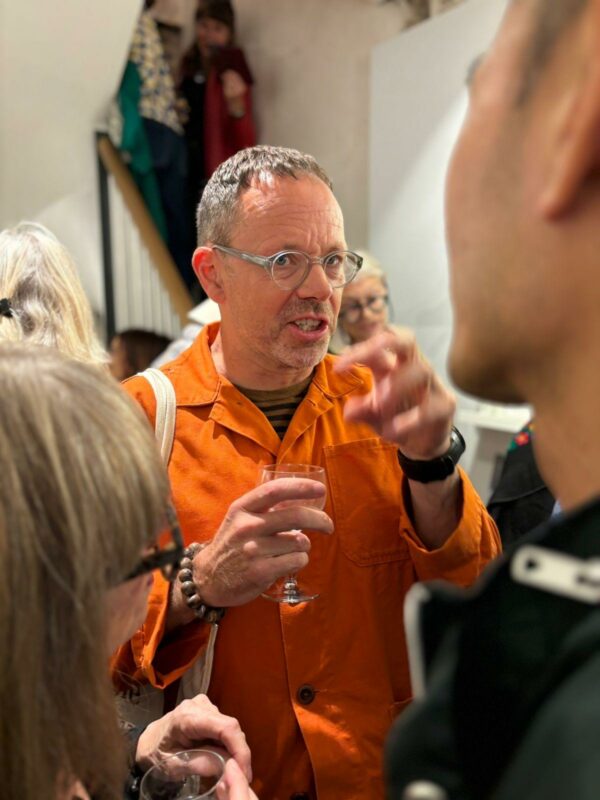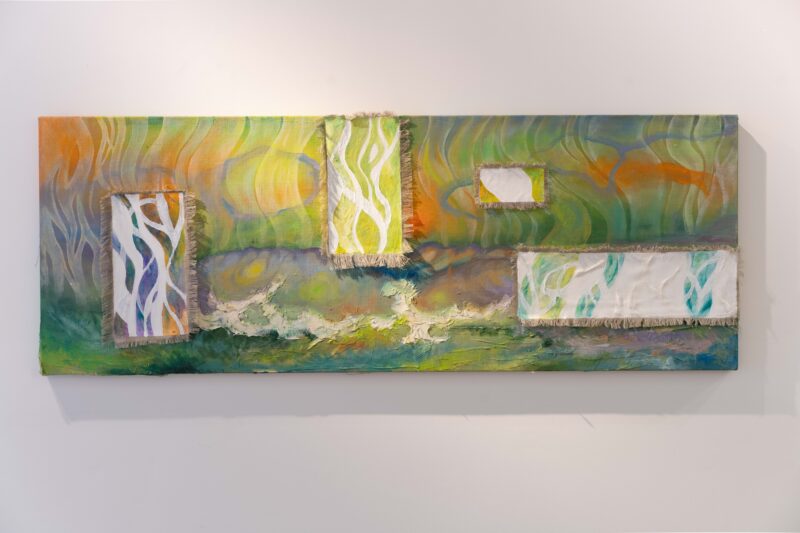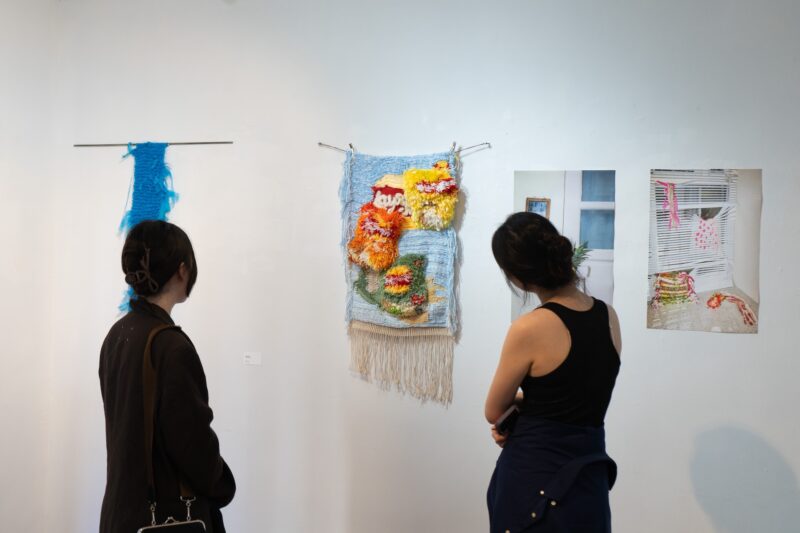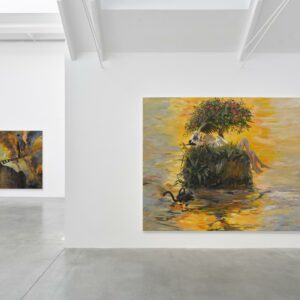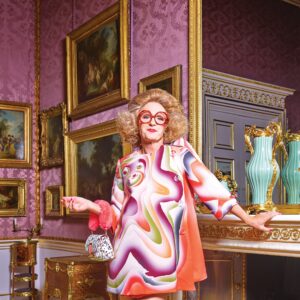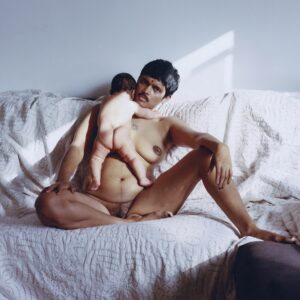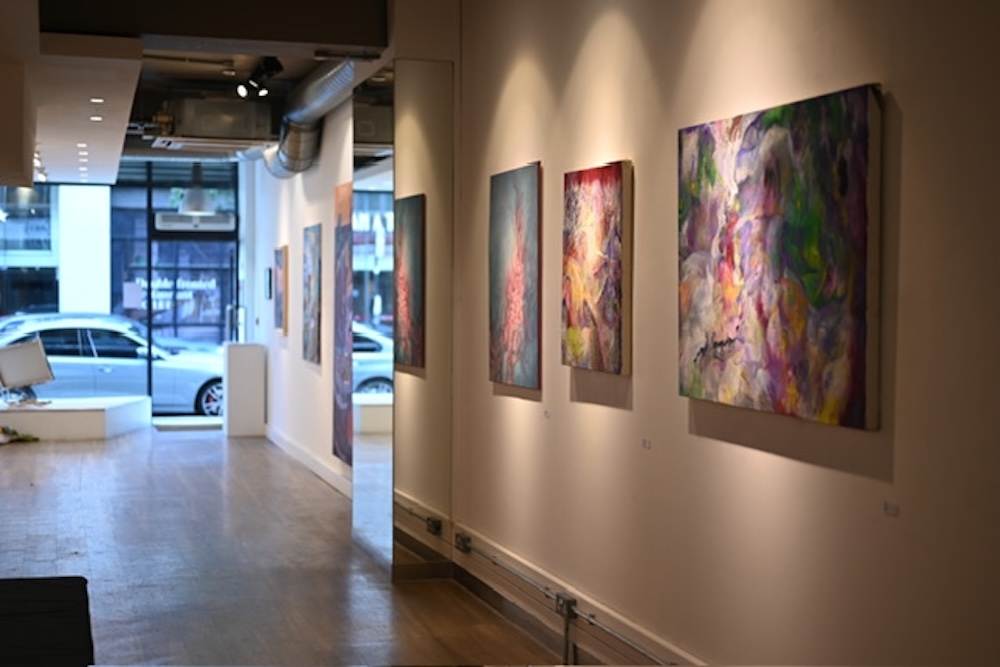
Curators Gino Wong and Zishi Zhang present Behind Dramaturgy: the Stories You Rarely Told Others. Our lives are constantly dramatised: our beings, our acting; and the way our lives are arranged in the social context and under the social norms we are expected to perform according to.
In Nelson Goodman’s words, art is another way to exemplify a ‘way of world-making’. Drawing a vision of the world we desire for while inwardly, to explore our subjective experience: it is vital to embrace the authenticity of the self so that we can bring about the changes we want. The featured artists attempted to respond the dramaturgy of actions in our daily activities by going beyond the appearance – to explore what does the ‘subject’ feel beneath the mask.
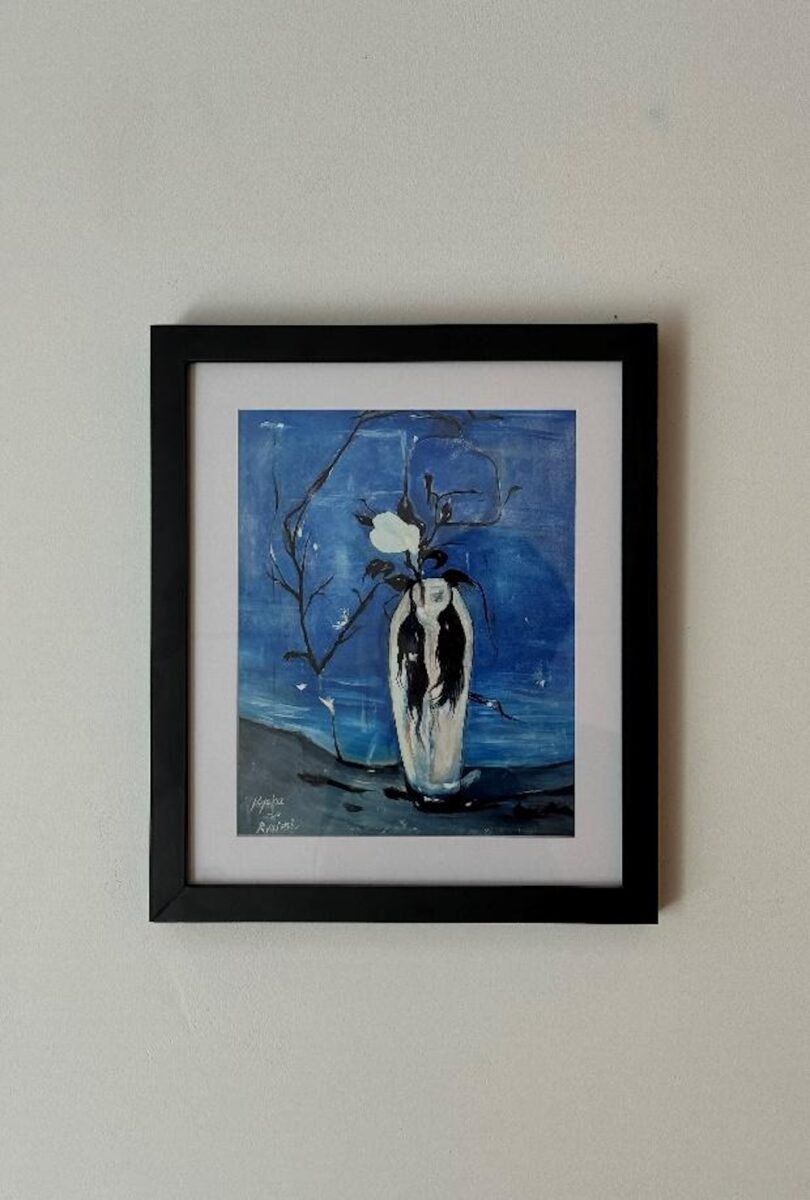
Kyoka Katori’s painting was created in memory of Ryuichi Sakamoto. Setting against a backdrop of deep blue tones, the lily is a flower of dualities and paradoxes and is traditionally seen as a symbol of purity and death. The flower is deconstructed here, thereby revealing its metaphorical complexity and hidden potential of toxicity beneath an exuberant façade, which is visually revealed through the butterflies that accompany it, which are drawn into a permanent state of stillness, showcasing the seductive yet deadly truth hidden within the concept of beauty.
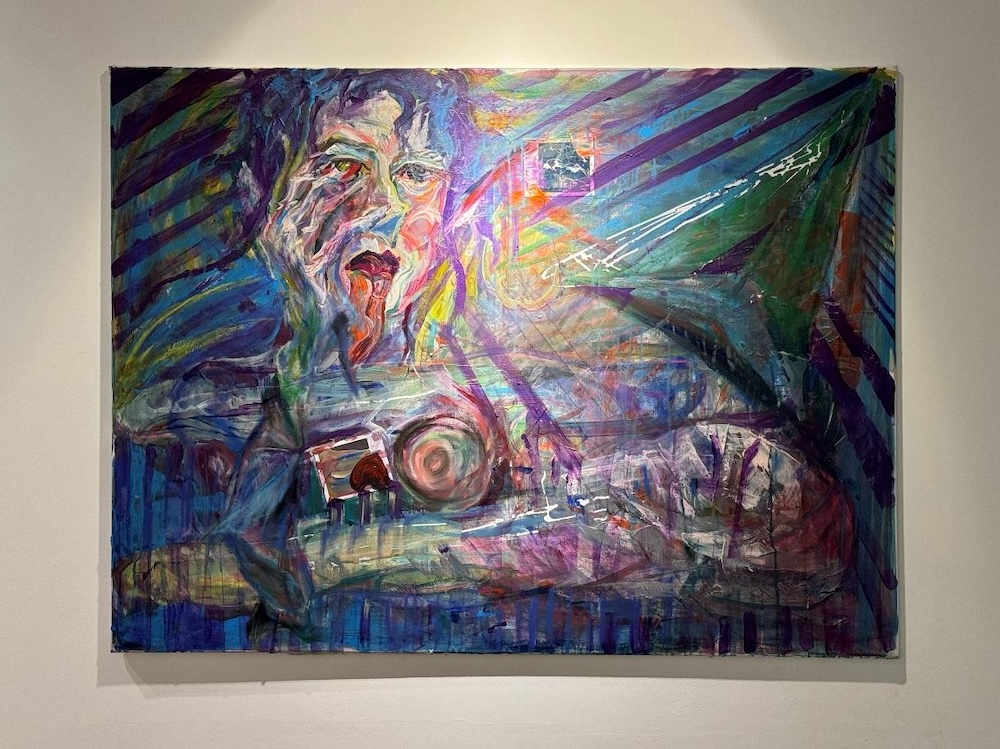
He Wang explores the playfulness of the ‘absurd’ in his works by seeking the impact of absurd images. Integrating surrealism into the creative concept, Wang hopes that by doing so the works can better interact with the viewers, thus inspiring them to self-criticise and to recall the traces of their past lives.
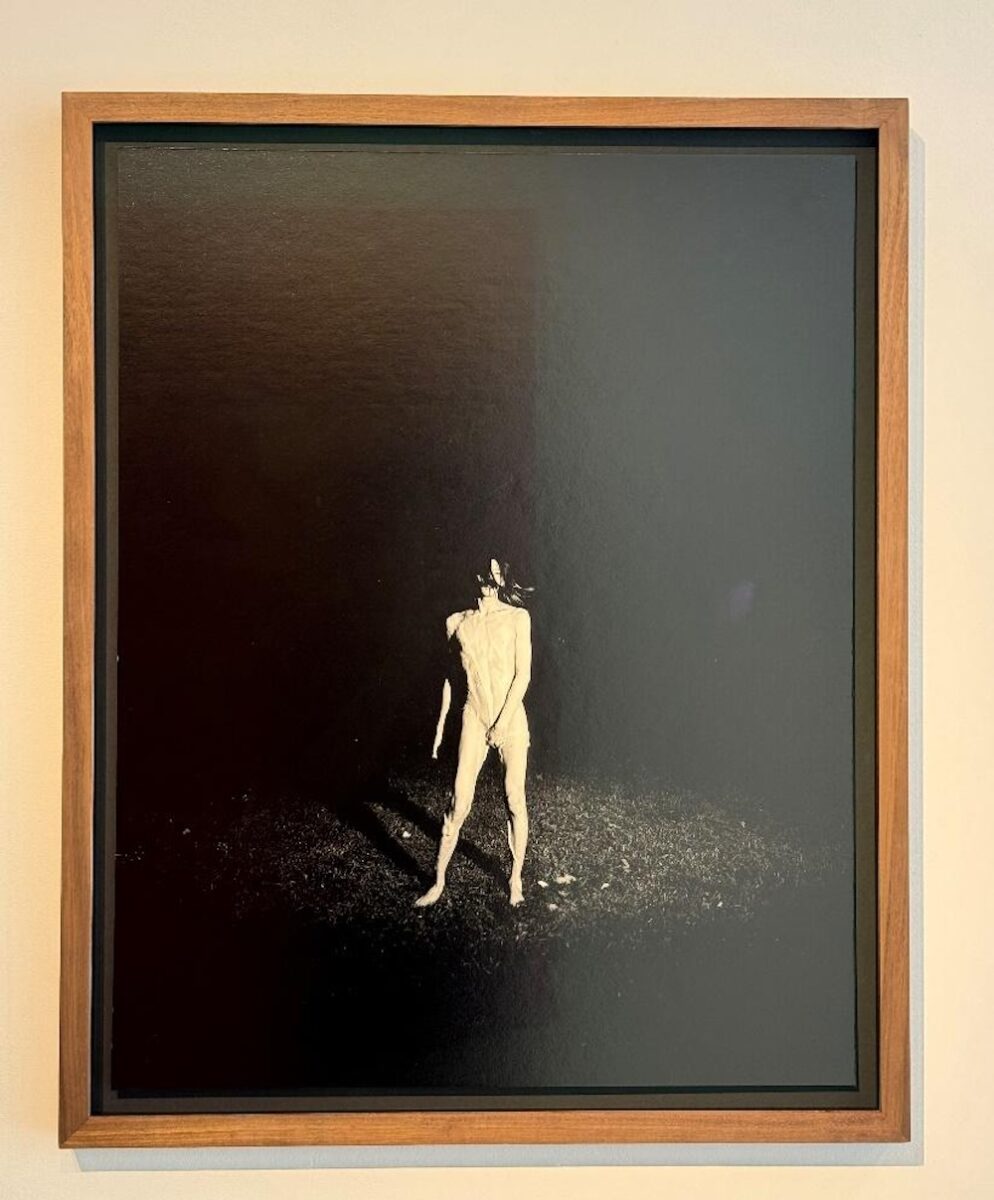
Inspired by the cruising experience and ‘Cruising Utopia’ by José Esteban Muñoz, in his ‘Echoes of Cruising’, Feng Xuan explores various gay cruising spots, which allow people to enter and liberate themselves by inverting open spaces into a destination of private activity, thus offering a unique queer journey beyond racial and spatial boundaries. By illuminating and capturing cruising spaces in the dark, he reveals both the metaphors of ‘coming out’ and bodies in the glow of momentary flashlights – an attempt to confront the concealment and boundaries of queer identity, and to highlight the desire by urbanised space and the issue of homophobia.
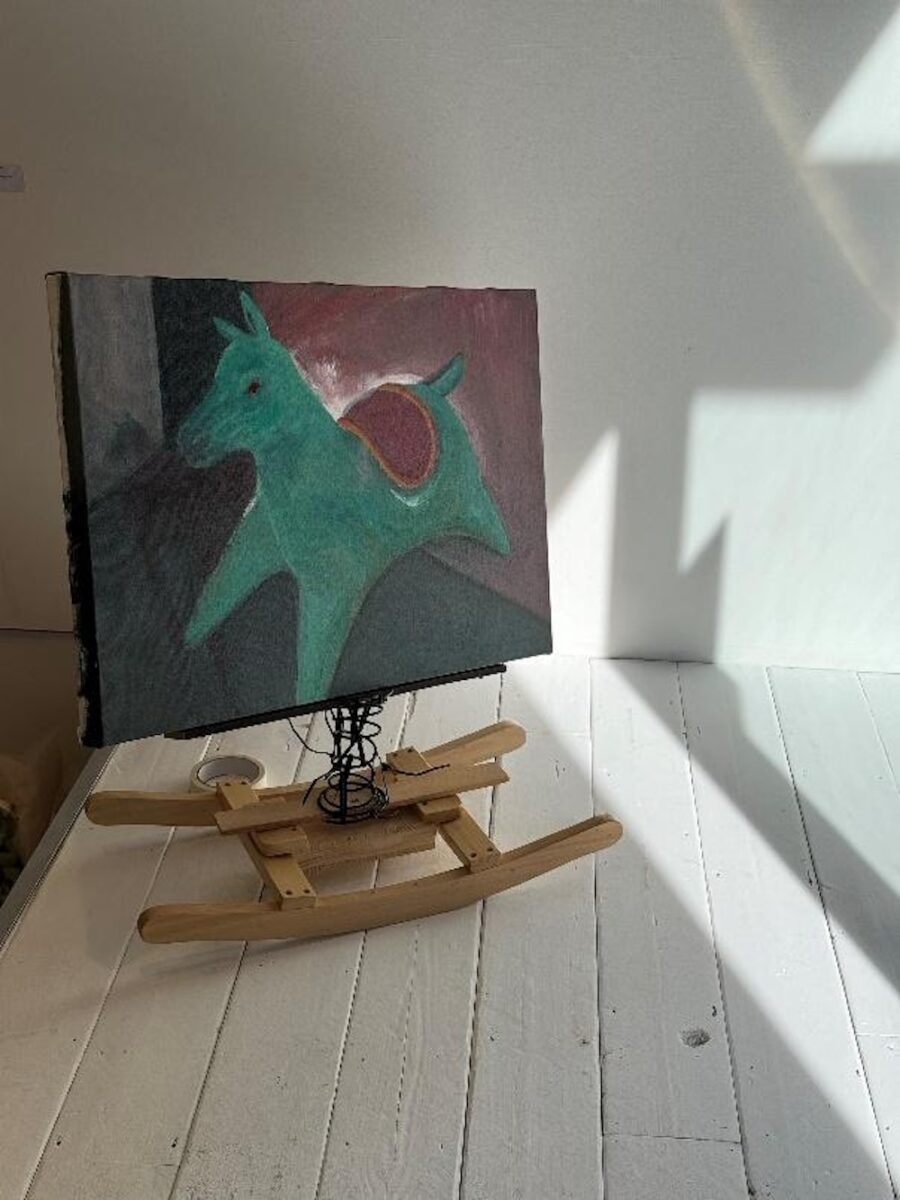
Traditionally, a painting is expected to be framed properly and accordingly. The frame of a painting is also an inseparable part of the painting itself. Li Xin Li takes this idea and dive deeper into ‘framing a painting’, creating frames as objects in relationship to the painting itself. In his works, horse and spur, the two contradicting elements exhibited within the same subject play a whimsical joke on the idea of familiarity, identity, and how we think. The conscious decision of not including the entire horse while leaving the frame open is not only an extension of my study on integrating frames more closely with the piece but also an attempt to decolonise the ‘art’ as an unapproachable object, inviting more connection and room to explore and imagine.
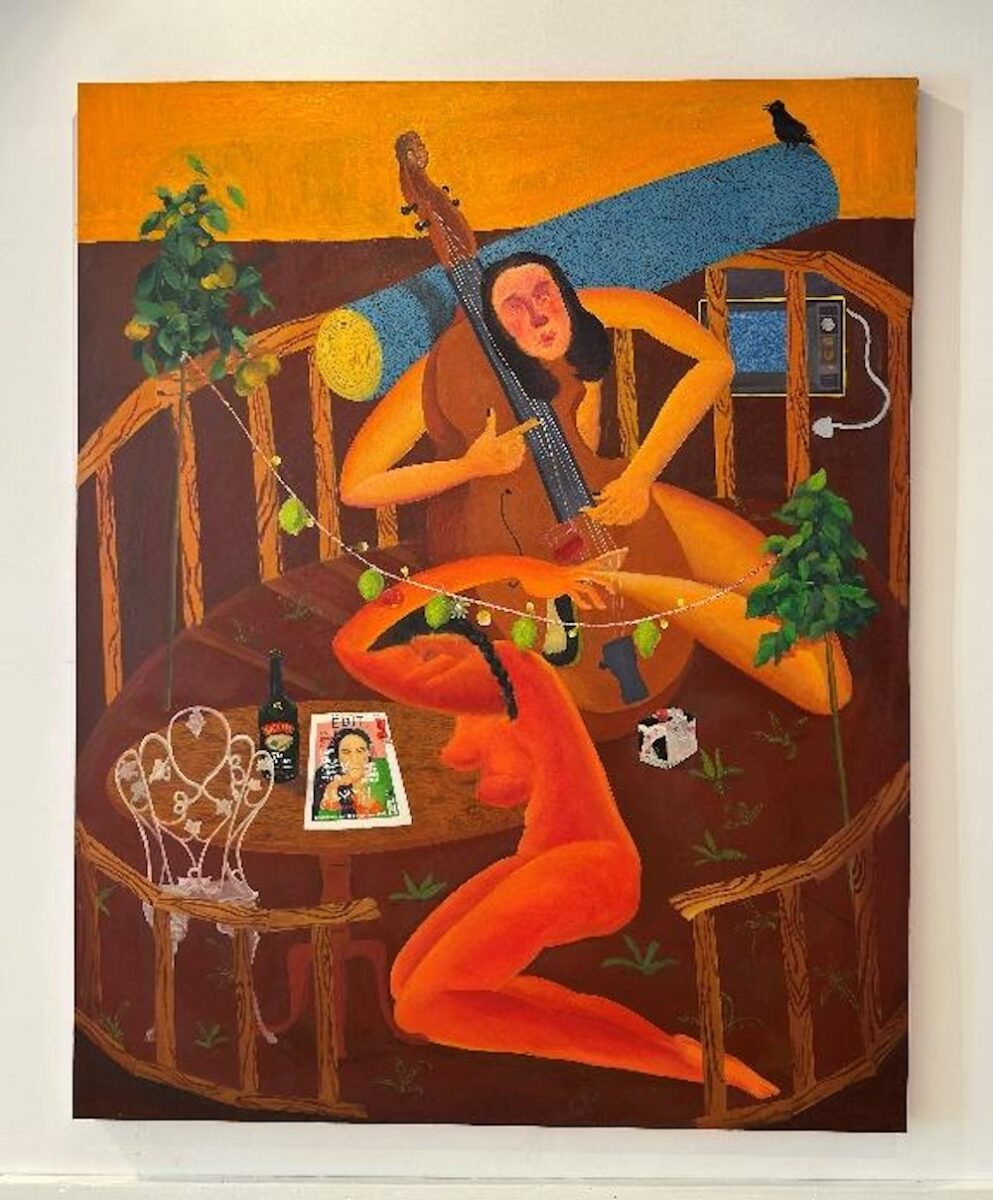
Yang Yu intervenes with his own experiences of joy in experiencing the ritual culture of the group when I express the mapping of secular rituals. In the practice, Yu focuses on the formalistic composition of the picture to create the behavioural movements and scenes of the characters. The work is a playful scene that shows the characters following their sensualities in a moment of joy.
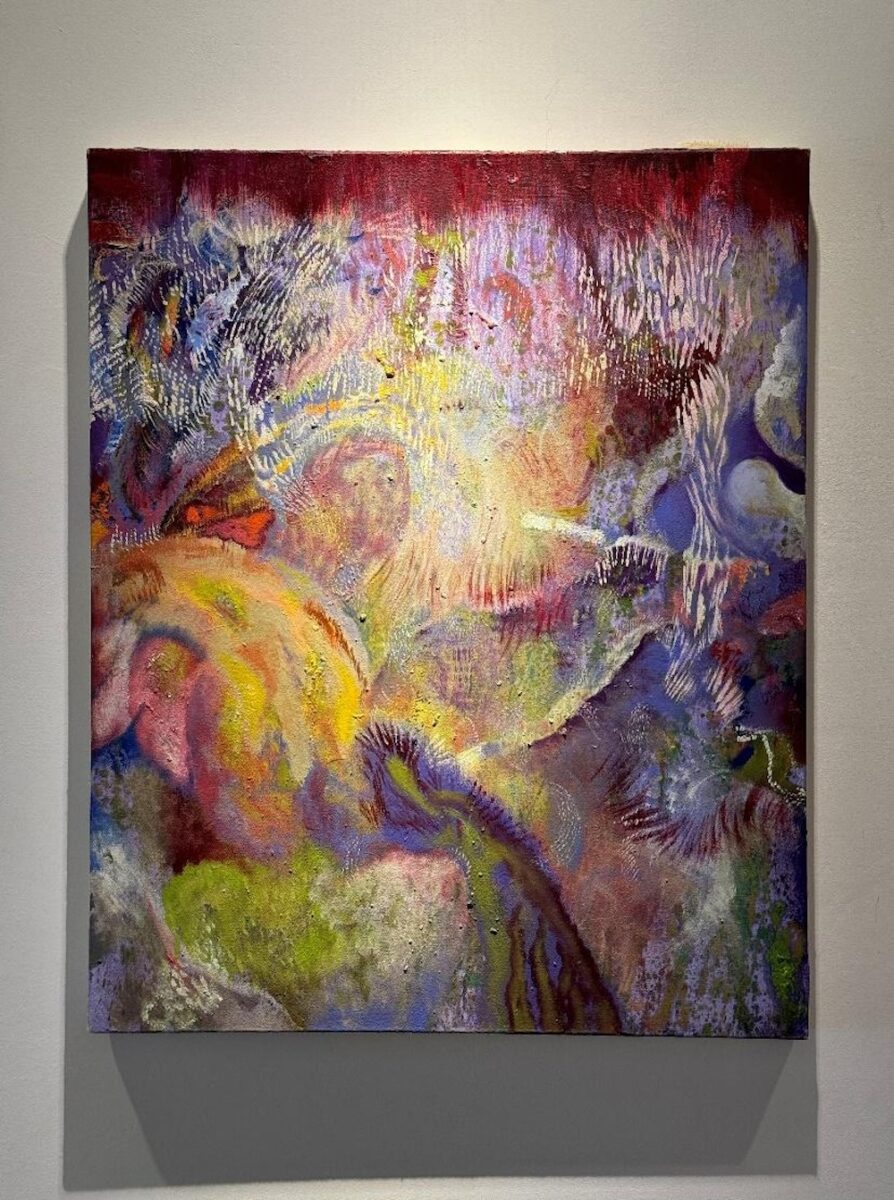
Depicting dismantled and hollowed-out food subjected to violence, along with wounds covered with ulcers and alienated bodily trunks, Wenhui Hao’s paintings undergo repeated deconstruction through abstract and layered brushstrokes, cascading into imbalance amid the unpredictable flow of liquids. The process of painting as akin to suturing and repairing in medical pathology reflecting intense emotional experiences formed by a mixture of harm and caress in relationships. She perceives the pursuit of materiality in painting as a form of fetishism, constructing an intertextual narrative of materiality and erotic experience.
At the age of seventeen, Alicia Leng felt that she stood at the crossroads of excitements and transformations, a pivotal year where the tides of adolescence surge with unrelenting force. Her faculties are in a state of perpetual metamorphosis, marked by a kaleidoscope of emotions that run the gamut from starry-eyed romantic daydreams to the fierce yearnings which keep me awake at night. The presence of sadness and anxiety is justifiable, as wisely quoted by Nietzsche and Hesse, it is about looking into oneself.
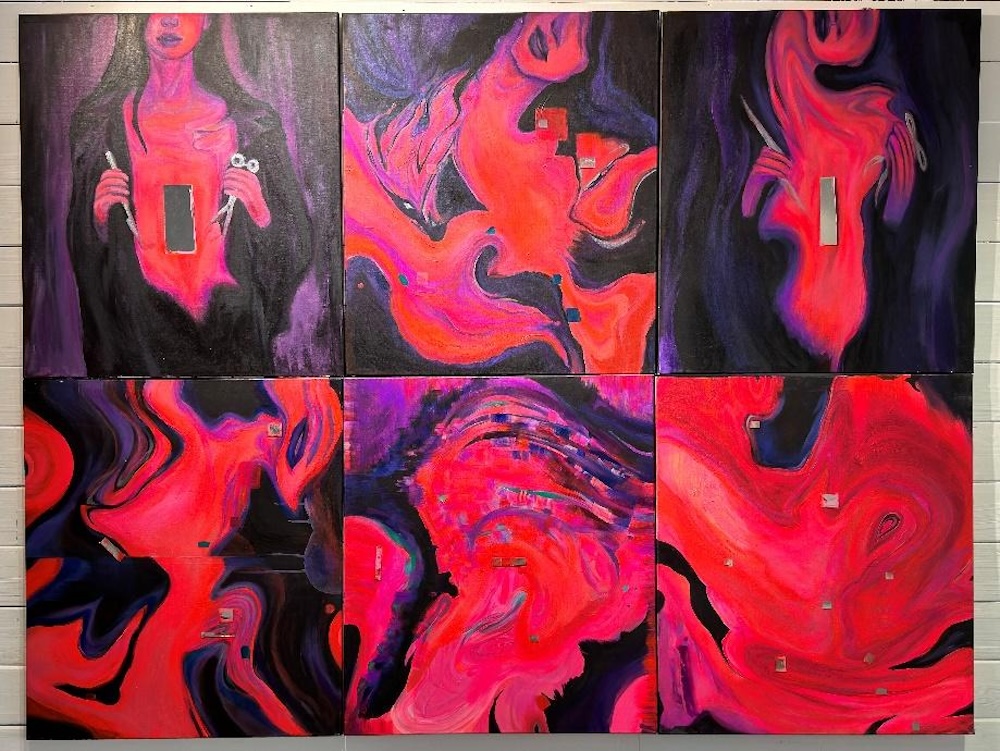
‘Self-surgery’ is a series of paintings about human body autonomy and extreme self-exploration. Drawing from painful struggles from a personal perspective, Yuge Zhu depicted the process of gradually awakening to blurred consciousness, highlighting the individual’s demand for body autonomy, and reflecting on topics of self-identity, emotional trauma, and psychological disorders. Through the work, she hopes to explore the relationship between body and self-consciousness. It is not only an examination of the boundaries in betwixt but also a philosophical thinking on self-dominance and physical and mental endurance.
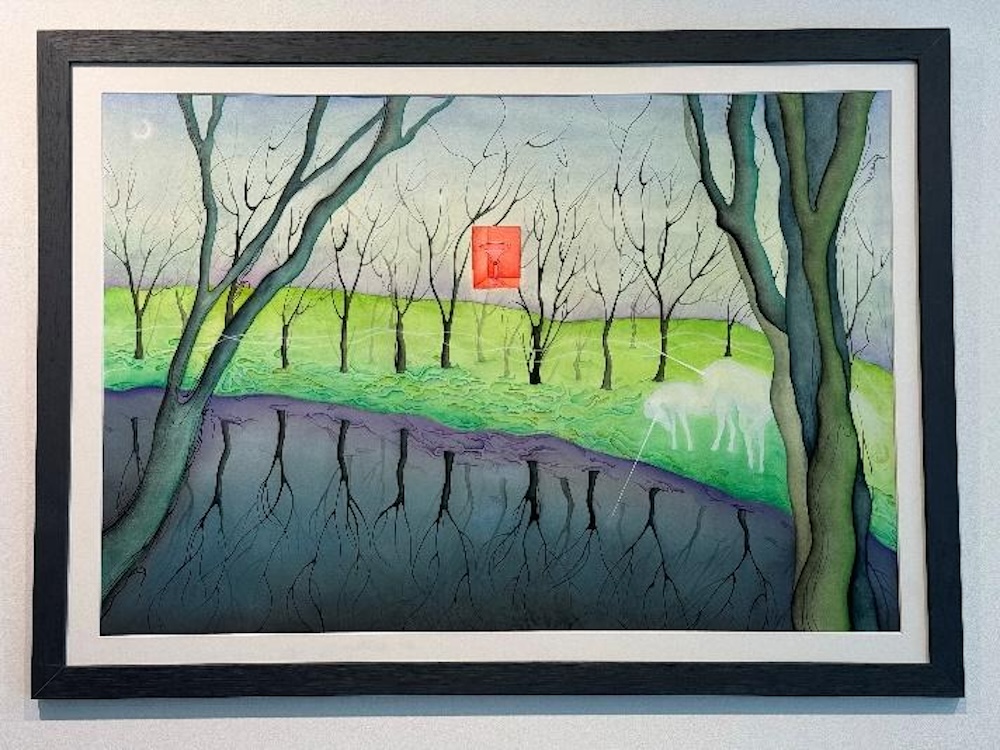
The tangled hair and floating weeds depicted are metonymic of anxiety for Shuwen Wang, induced by the omnipresent demands of aesthetic standards regarding hairstyles. The woman trapped in the water is representing myself and all women. But the storm shall pass as the figure of a pair of legs as white as porcelain symbolises that even the darkest moment will be overcome by the daybreak, and new hope will arise in the background of the world we want to see. This work is centred around eco-feminist compositions that tell stories about nature, spirituality, femininity, and memory.

The stone lithography piece is the first work stemming from Siming Cao’s personal experience of losing my aunt to a rare cancer called malignant mesothelioma. She attempted to abstractly depict the visual manifestations of this cancer, such as the shadows inside the body and the thickened pleura, as seen in medical images, serving as a warning of danger. At the centre of the image is a decaying human body, surrounded by shadows resembling organs and a rotting peach pit which symbolised the loss of vitality.

Zhengkun Zhan’s work is quite an undisguised response to ‘the subject behind the mask’. The architectural section is an anthroponomical display of self behind the cover of social conventions. There are two types of social norms; one that takes the virtuous form to strategically demonstrate one’s politeness as a dramaturgical etiquette, whilst the other kind of social norms can be vicious as they are created out of epistemic vices, such as widespread biases, racial slurs, sexist ‘jokes’, etc. I believe both types exist in most people’s outer fabric of their construction so that they can protect what’s inside the building of themselves. I have exposed a few secrets of myself in this work, and so that I have embraced authenticity beyond those that are so-called ‘socially acceptable’.
Ishilla Aleksandra created the following poem for their work:
Transjective
I look in the mirror and I think
Does this I fit in this
In this body
Does this mind fit in this
In this world
What I see in the reflection
Is what I’ve already seen somewhere else
Does this match to the pieces of visions I have collected over the years?
I look in the mirror and touch
My finger to another finger
Is it my body or is it another matter I felt somewhere else before
Is this itself
If there is so many of it
It seems
The mirror stage hasn’t arrived yet
not subjective
not objective
transjective

